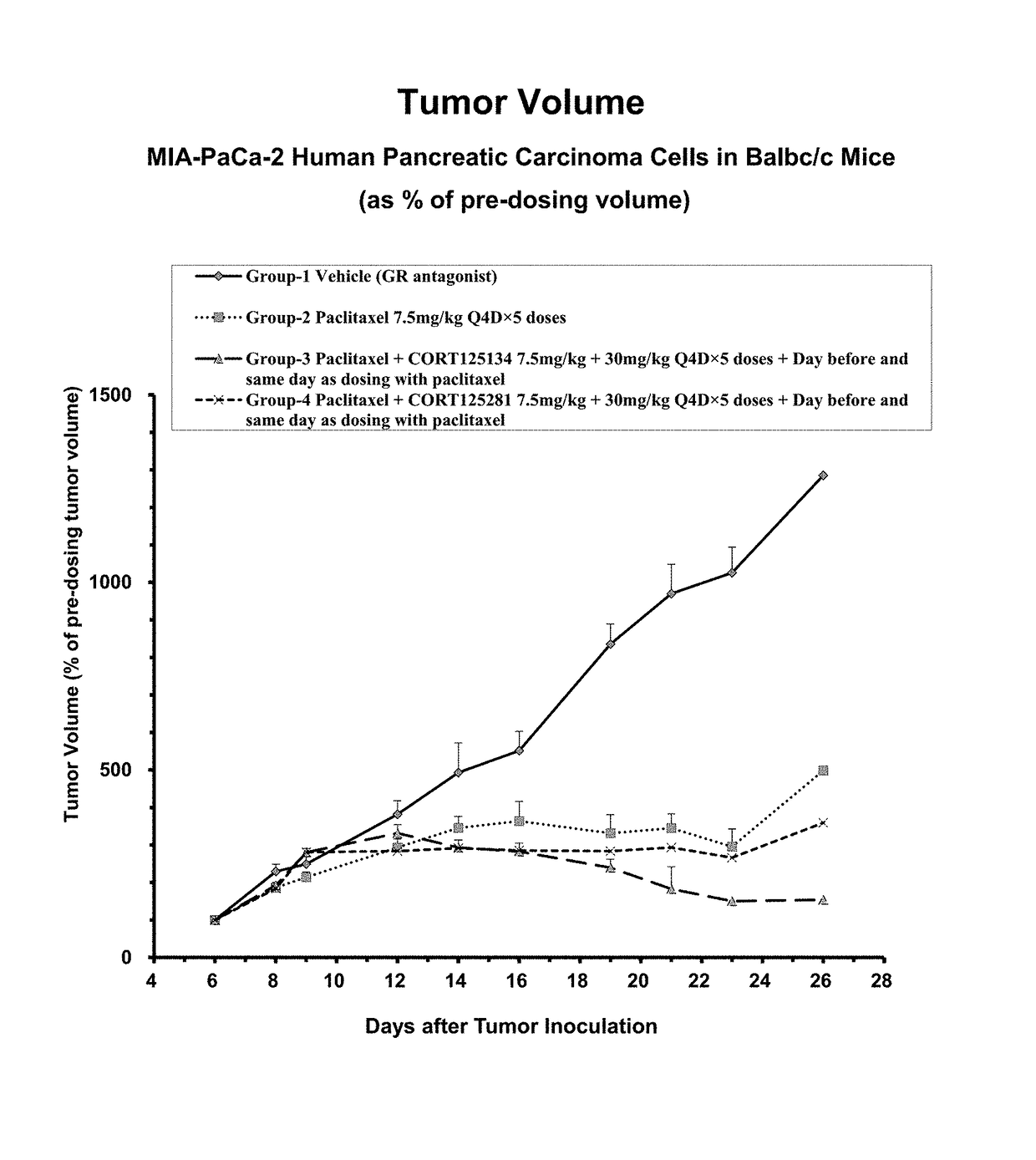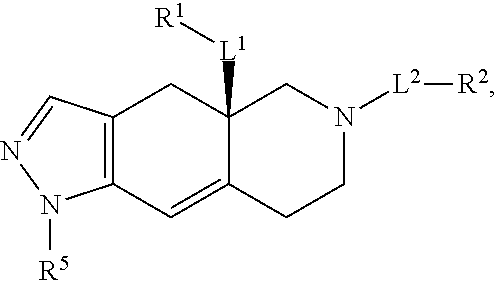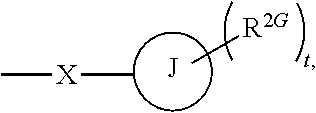Glucocorticoid receptor modulators to treat pancreatic cancer
a technology of glucocorticoid receptor and pancreatic cancer, which is applied in the direction of heterocyclic compound active ingredients, drug compositions, halogenated hydrocarbon active ingredients, etc., can solve the problems of damage to normal healthy organs and tissues, poor prognosis of cancer, severe and debilitating side effects, etc., and achieve the effect of reducing tumor load and reducing tumor load
- Summary
- Abstract
- Description
- Claims
- Application Information
AI Technical Summary
Benefits of technology
Problems solved by technology
Method used
Image
Examples
example 1
osine Aminotransferase (TAT) Assay
[0205]The following protocol describes an assay for measuring induction of TAT by dexamethasone in HepG2 cells (a human liver hepatocellular carcinoma cell line; ECACC, UK). HepG2 cells are cultured using MEME media supplemented with 10% (v / v) foetal bovine serum; 2 mM L-glutamine and 1% (v / v) NEAA at 37° C., 5% / 95% (v / v) CO2 / air. The HepG2 cells are then be counted and adjusted to yield a density of 0.125×106 cells / ml in RPMI 1640 without phenol red, 10% (v / v) charcoal stripped FBS, 2 mM L-glutamine and seeded at 25,000 cells / well in 200 μl into 96 well, sterile, tissue culture micro titre plates, and incubated at 37° C., 5% CO2 for 24 hours.
[0206]Growth media are then removed and replaced with assay media {RPMI 1640 without phenol red, 2 mM L-glutamine+10 μM forskolin}. Test compounds are then screened against a challenge of 100 nM dexamethasone. Compounds are then be serially half log diluted in 100% (v / v) dimethylsupfoxide from a 10 mM stock. Th...
example 2
Tumor Growth Using the Combination Therapy of CORT 125134 and a Chemotherapeutic Agent
[0210]Human Pancreatic carcinoma cells (MIA-PaCa-2) were purchased from the American Type Cell Collection (ATCC). The cells were grown in Dulbecco's Modified Eagle's Medium (DMEM) containing 10% (v / v) heat inactivated fetal calf serum and 2.5% horse serum at 37° C. Suspensions of the cells were injected subcutaneously into the left flank of 5-6 week old immunocompromised female mice (Balbc / c nude), 3 million cells per mouse. Tumors were allowed to grow until they reach a volume of 100-200 cubic millimeters (mm3). Mice were then grouped into four groups, ten (10) per group, and treated with compounds or vehicle as follows. Vehicle or paclitaxel was administered intravenously and SGRMs, i.e., CORT25134 and CORT125281, were administered orally. SGRMs were administered in vehicle ((10% dimethyl sulfoxide (DMSO), 0.1% Tween 80 (polyethylene glycol sorbitan monooleate (polysorbate 80)) and 89.9% hydroxyp...
example 3
a Patient Having Pancreatic Cancer with Sgrm and a Chemotherapeutic Agent
[0212]A typical pancreatic patient may complain of upper abdomen pain that typically radiates to the back. Such a patient may experience loss of appetite, nausea and vomiting episodes, and may suffer significant weight loss. A CT scan may show the presence of a tumor in the pancreas. The presence of an exocrine pancreatic tumor may be confirmed by histological analysis. Blood ACTH level may be within the normal range for ACTH. Such a patient may be treated with CORT125134 at a dose of 200 mg once a day for eight weeks in combination with an intravenous infusion of nab-paclitaxel at a dose of 80 mg per square meter of body-surface area as an intravenous infusion over 30 minutes on days 1, 8, and 15 of every 28-day cycle. Tumor load may be monitored using enhanced Mill before, during and after such treatment. Imaging results may indicate that the size of the tumor gradually decreases; such reduction may be more t...
PUM
| Property | Measurement | Unit |
|---|---|---|
| shrinkage | aaaaa | aaaaa |
| shrinkage | aaaaa | aaaaa |
| shrinkage | aaaaa | aaaaa |
Abstract
Description
Claims
Application Information
 Login to View More
Login to View More - R&D
- Intellectual Property
- Life Sciences
- Materials
- Tech Scout
- Unparalleled Data Quality
- Higher Quality Content
- 60% Fewer Hallucinations
Browse by: Latest US Patents, China's latest patents, Technical Efficacy Thesaurus, Application Domain, Technology Topic, Popular Technical Reports.
© 2025 PatSnap. All rights reserved.Legal|Privacy policy|Modern Slavery Act Transparency Statement|Sitemap|About US| Contact US: help@patsnap.com



